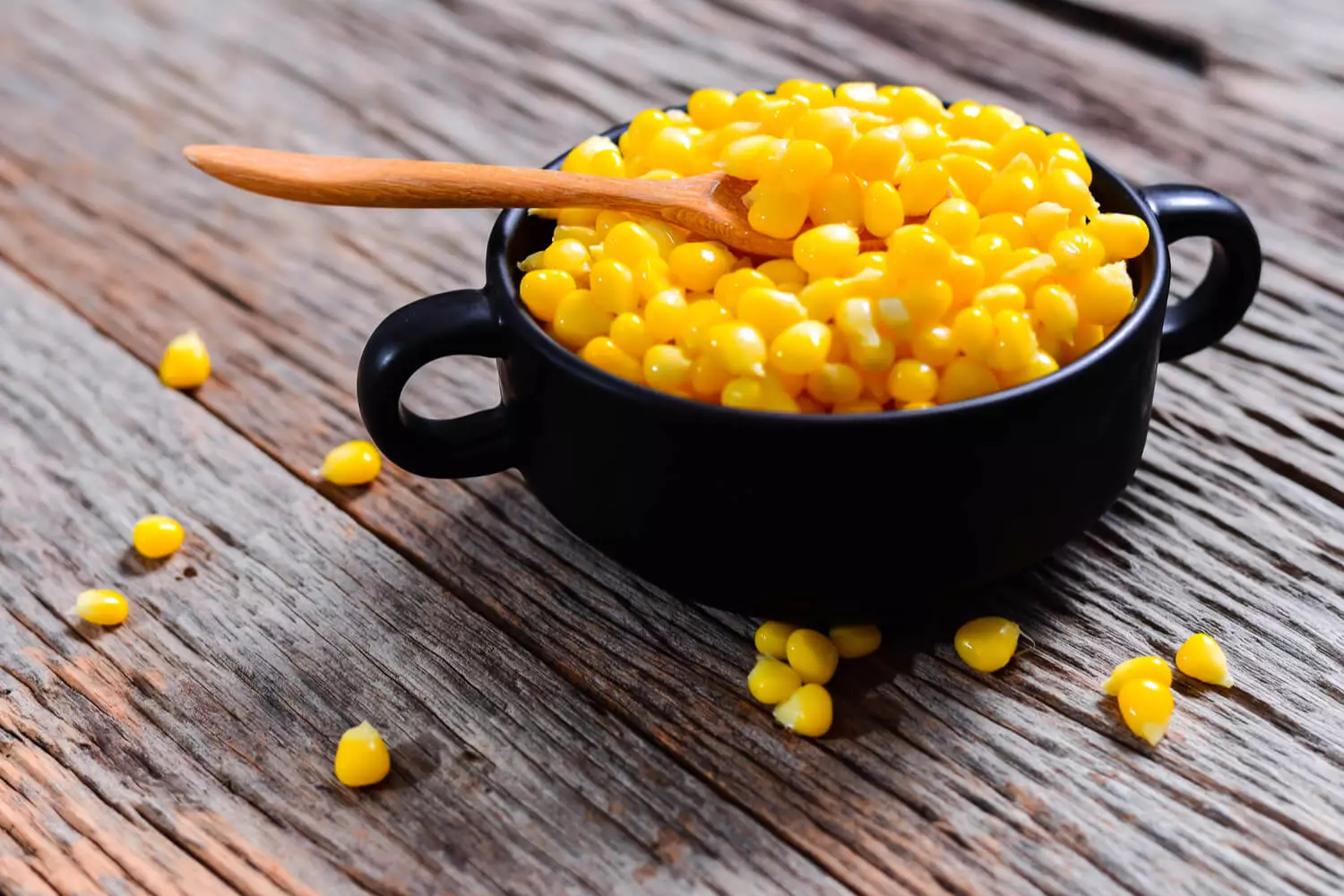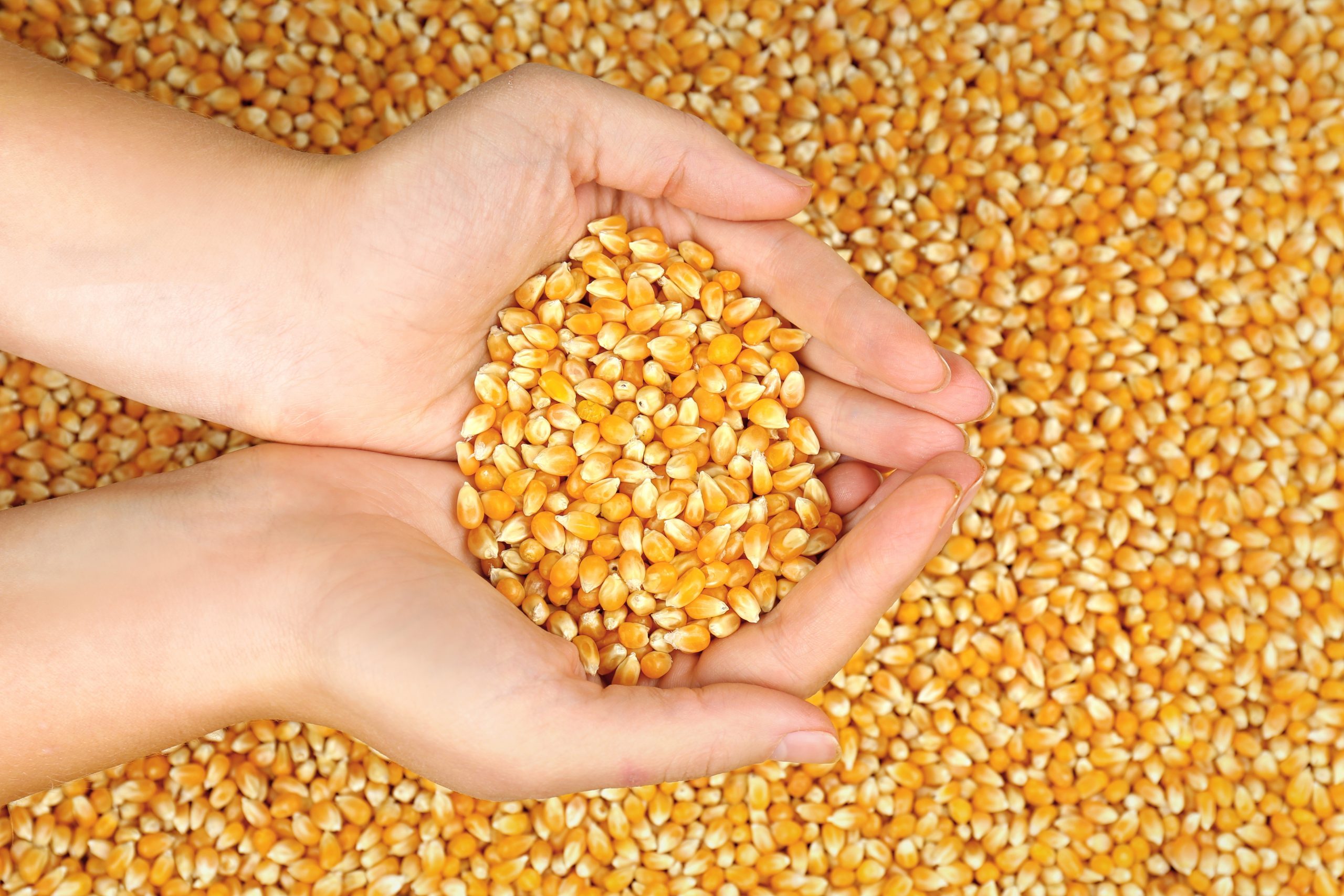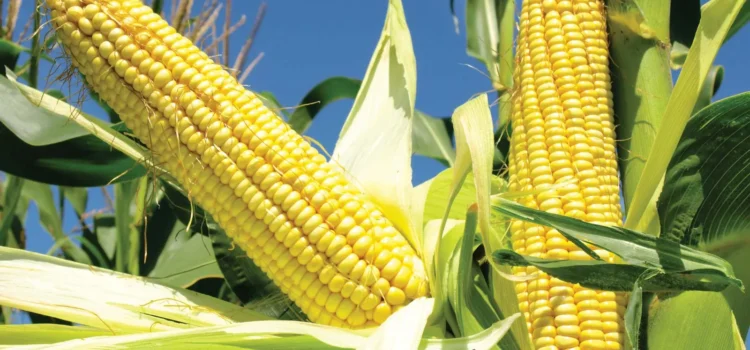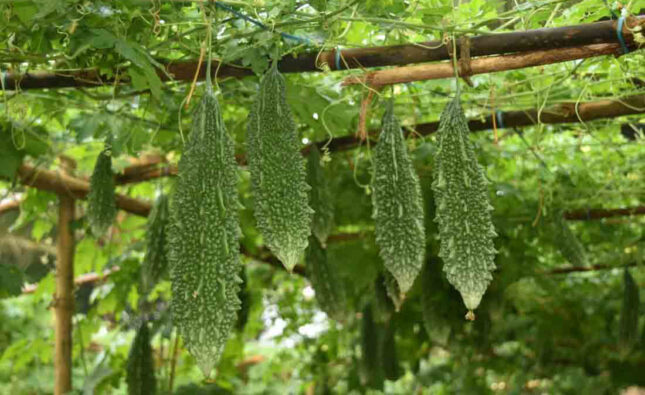Maize Crop Cultivation, Varieties, Its Demond & Sales: A Complete Guide
Maize, also known as corn, is one of the most widely cultivated cereal crops in the world. It is a staple food for millions of people and serves as a vital source of nutrition for both humans and animals. Maize crops are known for their versatility, as they can be used for various purposes, including food, feed, and industrial applications. Maize is believed to have originated in the Americas, and it has a rich history dating back thousands of years.
Today, it is grown in diverse climates and regions, making it a crucial crop for global food security. The plant’s adaptability allows it to thrive in different environments, ranging from temperate to tropical regions. Maize cultivation requires well-drained soil, ample sunlight, and adequate rainfall or irrigation.
There are different varieties of maize, including field corn, sweet corn, and popcorn, each with distinct characteristics and uses. Field corn, which constitutes the majority of maize crops, is primarily grown for animal feed and industrial purposes, such as in the production of corn-based products like cornmeal, corn syrup, and ethanol. Sweet corn, on the other hand, is primarily consumed as a vegetable and is known for its juicy and sweet kernels.
Popcorn is a unique variety that, when heated, pops to create a tasty and popular snack. Maize is a highly nutritious crop, providing carbohydrates, dietary fiber, and essential vitamins and minerals. It is a good source of energy and is often a staple food for people in many parts of the world. Additionally, maize can be processed into various food products like tortillas, cornbread, polenta, and corn flakes.
Beyond its importance as a food crop, maize plays a critical role in agriculture and economy. It is a valuable rotational crop, helping to improve soil fertility by fixing nitrogen. Moreover, maize serves as a vital feed source for livestock, supporting the livestock industry worldwide. The production of maize also contributes significantly to the economy through employment opportunities, trade, and industrial applications, such as the production of biofuels like ethanol. However, maize cultivation faces challenges, including pests, diseases, and environmental concerns. Pests like corn borers and armyworms can cause substantial damage to crops if not adequately managed. Climate change and erratic weather patterns can also impact maize yields, affecting food security in vulnerable regions.
Efforts are ongoing to develop improved maize varieties with higher yields, better resistance to pests and diseases, and enhanced nutritional profiles. Sustainable agricultural practices, such as crop rotation, integrated pest management, and water-efficient irrigation techniques, are also being promoted to enhance maize production while minimizing environmental impact. In conclusion, maize crops play a vital role in global agriculture and food systems. As a versatile cereal crop, maize provides essential nutrition for humans and animals alike, and its various applications contribute to the economy and industry. Despite the challenges, ongoing research and sustainable practices continue to support maize cultivation and ensure its significance in feeding the world’s growing population.
Maize Crop Cultivation:
Maize crops, also known as corn cultivation, involve several important steps to ensure successful growth and optimal yields.
Here is an overview of the maize cultivation process:
1. Land Preparation:
The first step in maize cultivation is land preparation. Farmers plow and till the soil to break it up and create a suitable seedbed. This process helps improve soil aeration, drainage, and nutrient availability.
2. Varieties Selection:
There are several varieties of maize (corn), each with its unique characteristics and uses. These varieties are bred to suit different climates, growing conditions, and intended purposes. Here are some important verities of maize:
-
Dent Corn:
Dent corn, also known as field corn, is one of the most widely grown maize varieties. The name “dent corn” comes from the small dent that forms on the crown of the kernel as it dries. It is primarily used for animal feed, as well as in industrial applications for producing cornmeal, corn syrup, ethanol, and other products.
-
Sweet Corn:
Sweet corn is the type commonly consumed as a vegetable. It is characterized by its sweet and juicy kernels, which are eaten fresh or cooked. Sweet corn is usually harvested when the kernels are in their milky stage, before they fully mature and turn starchy.
-
Popcorn:
Popcorn is a unique variety of maize known for its ability to pop and expand when heated. The kernels have a hard outer shell and a small amount of moisture inside. When heated, the moisture turns into steam, causing the kernel to burst open and create the familiar fluffy popcorn.
-
Flint Corn:
Flint corn, also known as Indian corn, is characterized by its hard and colorful kernels. This variety is commonly used for decorative purposes, especially during harvest festivals and Thanksgiving celebrations. While not as commonly used for human consumption, it can be ground into cornmeal or used for livestock feed.
-
Flour Corn:
Flour corn has soft, starchy kernels and is often used for grinding into fine corn flour or cornmeal. It is commonly used in traditional dishes like tortillas, tamales, and other maize-based foods.
-
Waxy Corn:
Waxy corn is named for its waxy appearance due to its high amylopectin starch content. It is used in specific industrial applications, such as in the production of modified starches, adhesives, and thickeners.
-
High-Oil Corn:
High-oil corn is bred to have a higher oil content compared to standard corn varieties. It is primarily used for producing cooking oils and various food products that require higher oil content.
-
High-Lysine Corn:
High-lysine corn is bred to have increased levels of the essential amino acid lysine. It is used to improve the nutritional profile of animal feed and human food products.
-
High-Starch Corn:
High-starch corn varieties have higher starch content, making them suitable for various industrial applications, including the production of corn syrup and ethanol.
3. Showing Time of Maize Crops
The showing time, also known as the emergence or germination time, is the period when the maize seedlings emerge from the soil after planting. This occurs typically within 7 to 10 days after sowing, depending on the soil temperature and moisture.
-
Vegetative Growth Stage:
After the seedlings emerge, maize goes through a vegetative growth stage, where the plant develops leaves and stems. During this stage, the plant is focused on establishing a strong root system and growing taller. The vegetative growth stage can last for about 6 to 8 weeks, depending on the variety and growing conditions.
-
Tasseling and Silking:
Around 50 to 60 days after planting, the maize plants enter the reproductive stage. This is when the tassels (male flower structures) and silks (female flower structures) appear on the plants. Pollination occurs when pollen from the tassels falls onto the silks, leading to the development of kernels on the cobs.
-
Grain Filling:
After successful pollination, the maize kernels start to develop and fill. This process is known as grain filling and usually takes around 20 to 30 days, depending on the maize variety and growing conditions. During this stage, the kernels accumulate starch and other nutrients, reaching their maximum size and weight.
4. Fertilization & Manuring in maize Crop:
Fertilization and manuring are essential practices in maize cultivation to ensure optimal plant growth, crop yield, and nutrient uptake. The specific doses of fertilizers and manures to be applied to maize crops can vary based on factors such as soil fertility, nutrient content, and the maize variety being grown. It’s essential to conduct soil tests to determine the nutrient levels in the soil and tailor the fertilization and manuring program accordingly. Here are some general guidelines for fertilization and manuring doses in maize cultivation:
-
Organic Manures:
Organic manures, such as farmyard manure (FY-M) and compost, help improve soil structure, fertility, and nutrient availability. The recommended dose of organic manure is typically 5 to 10 tons per hectare (t/ha) or 2 to 4 tons per acre. The manure can be spread evenly over the field before plowing or applied in the planting furrows.
-
Nitrogen (N):
Nitrogen is a crucial nutrient for maize growth and plays a significant role in promoting vegetative growth and grain formation. The recommended nitrogen dose varies with soil type, but a general guideline is to apply 100 to 150 kg/ha (40 to 60 kg/acre) of nitrogen. Nitrogen can be applied in split doses, with about 30% at planting and the rest during the vegetative growth stages.
-
Phosphorus (P):
Phosphorus is vital for root development, flowering, and early fruiting. The recommended dose of phosphorus is typically 60 to 80 kg/ha (24 to 32 kg/acre) of phosphorus pentoxide (P2O5). It is generally applied as a basal dose during planting.
-
Potassium (K):
Potassium helps improve plant vigor, water uptake, and disease resistance. The recommended dose of potassium is around 40 to 60 kg/ha (16 to 24 kg/acre) of potassium oxide (K2O). Potassium can be applied as a basal dose or in split doses during the growing season.
-
Micronutrients:
In some cases, maize may benefit from micronutrient applications if deficiencies are identified through soil testing. Common micronutrients include zinc, iron, manganese, and copper. Micronutrients can be applied in chelated form or as foliar sprays, following specific recommendations based on soil test results.
-
Sidedressing:
In addition to the basal fertilization, maize may require sidedressing or top-dressing of nitrogen during the vegetative growth stage, especially in areas with leaching-prone soils or when prolonged rainy periods occur. Sidedressing helps provide additional nitrogen to support maize growth during the critical stages.
5. Irrigation:
Adequate water supply is essential for maize growth, especially during critical stages such as flowering and grain filling. Depending on the region’s rainfall patterns, farmers may use irrigation systems to provide supplementary water during dry periods.
6. Weed Control:
Weed management is critical in maize crops to prevent competition for nutrients, sunlight, and water, which can reduce crop yields. Effective weed control helps promote healthier maize plants and improve overall productivity. There are various weed management techniques, including chemical control using herbicides. When using herbicides, it’s essential to follow label instructions and recommended application rates to ensure safe and effective weed control. Here are some common herbicides and their recommended application doses for weed control in maize crops:
-
Atrazine:
Atrazine is a selective herbicide effective against broadleaf and grassy weeds. It is commonly used in maize crops. The recommended application rate for atrazine in maize is typically 1 to 2.5 kg active ingredient per hectare (0.4 to 1 kg active ingredient per acre) before weed emergence or during the early post-emergence stage of maize.
-
Mesotrione:
Mesotrione is a selective herbicide effective against certain broadleaf weeds. It is often used in combination with other herbicides for better weed control. The recommended application rate for mesotrione in maize is around 150 to 200 grams active ingredient per hectare (60 to 80 grams active ingredient per acre) during the early post-emergence stage of maize.
-
Glyphosate:
Glyphosate is a non-selective herbicide that controls a wide range of weeds. It is commonly used as a burndown treatment before planting maize or as a post-emergence treatment in glyphosate-tolerant maize varieties. The recommended application rate for glyphosate varies based on weed species and stage of growth but is typically around 1 to 3 kg active ingredient per hectare (0.4 to 1.2 kg active ingredient per acre).
-
Nicosulfuron:
Nicosulfuron is a selective herbicide effective against grassy weeds. It is often used in combination with other herbicides for broad-spectrum weed control. The recommended application rate for nicosulfuron in maize is around 25 to 40 grams active ingredient per hectare (10 to 16 grams active ingredient per acre) during the early post-emergence stage of maize.
-
Dicamba:
Dicamba is a selective herbicide effective against certain broadleaf weeds. It is commonly used in combination with other herbicides for better weed control. The recommended application rate for dicamba in maize is around 150 to 300 grams active ingredient per hectare (60 to 120 grams active ingredient per acre) during the post-emergence stage of maize.
-
2,4-D:
2,4-D is a selective herbicide effective against broadleaf weeds. It is commonly used in combination with other herbicides for broad-spectrum weed control. The recommended application rate for 2,4-D in maize is around 250 to 500 grams active ingredient per hectare (100 to 200 grams active ingredient per acre) during the post-emergence stage of maize.
7. Pest and Disease Management in Maize cultivation
Pest and disease management is a crucial aspect of maize cultivation to protect the crop from potential threats and ensure optimal yields. Maize is susceptible to various pests and diseases that can cause significant damage if left unchecked. Integrated pest management (IPM) strategies are commonly employed to minimize the impact of pests and diseases while promoting sustainable agricultural practices. Here are some key pest and disease management techniques used in maize cultivation:
A. Crop Rotation:
Crop rotation is an essential practice in maize cultivation to disrupt the life cycle of pests and diseases. By rotating maize with different crops, pests and diseases that are specific to maize are less likely to build up in the soil and affect subsequent maize crops.
B. Hybrid Varieties and Resistant Cultivars:
Planting hybrid maize varieties and cultivars with resistance to specific pests and diseases can help reduce the risk of crop damage. Breeders develop hybrids with genetic resistance to common pests like corn borers and diseases like maize rust.
C. Sanitation:
Proper sanitation practices, such as removing and destroying crop residues and weeds, can help reduce the buildup of pests and diseases. Infected plant debris should be properly disposed of to prevent the spread of diseases.
D. Biological Control:
Encouraging natural enemies of pests, such as beneficial insects and predators, can be an effective form of pest control. For instance, releasing ladybugs to control aphids or using parasitic wasps to target corn borers.
E. Cultural Practices:
Implementing specific cultural practices can also aid in pest and disease management. Planting maize in blocks or multiple rows can enhance wind pollination and reduce the impact of pests like corn earworm. Proper spacing between plants can promote good airflow, reducing the likelihood of foliar diseases.
F. Chemical Control:
- Chemical Treatment for Pest Control:
There are various insecticides used for pest control in maize crops, and their application doses depend on factors such as the target pest, the severity of infestation, and the specific product’s formulation. It’s important to note that the use of insecticides should be based on careful pest scouting and integrated pest management (IPM) practices to minimize environmental impact and promote sustainable agriculture. Always follow the label instructions and recommendations from agricultural experts or extension services for proper application. Here are some common insecticides used for maize crops:

- Bacillus thuringiensis (Bt): Bt is a biopesticide used to control caterpillar pests, such as corn borers and fall armyworms. It is available in various formulations, including sprays and genetically modified (Bt) maize varieties.
- Pyrethroids (e.g., lambda-cyhalothrin, deltamethrin, cypermethrin): Pyrethroids are synthetic insecticides effective against a wide range of pests, including corn earworm, armyworms, and aphids. Application doses vary depending on the product concentration and target pest.
- Chlorpyrifos: Chlorpyrifos is an organophosphate insecticide used against soil-dwelling insects and certain foliar pests in maize. It is typically applied as a soil treatment during planting or as a foliar spray.
- Imidacloprid: Imidacloprid is a neonicotinoid insecticide used as a seed treatment to protect young maize seedlings from early-season pests.
- Thiamethoxam: Another neonicotinoid insecticide used as a seed treatment to control pests like corn rootworms and early-season insects.
- Spinosad: Spinosad is a biopesticide derived from the bacterium Saccharopolyspora spinosa. It is effective against caterpillar pests and is commonly used in organic farming systems.
- Carbaryl: Carbaryl is a broad-spectrum insecticide used against various pests, including caterpillars, beetles, and grasshoppers. It is available as a spray and dust formulation.
- Methomyl: Methomyl is a carbamate insecticide used to control leaf-feeding pests in maize. It is applied as a foliar spray.
- Zeta-Cypermethrin: Zeta-Cypermethrin is a synthetic pyrethroid insecticide used against a broad range of maize pests. It is applied as a foliar spray.
2. Chemical Treatment for Disease Control:
Treating diseases in maize crops typically involves the use of fungicides, which are chemical substances designed to control fungal pathogens that can cause various plant diseases. The choice of fungicide and its application doses depend on the specific disease affecting the maize crop, the severity of the infection, and environmental conditions. It is essential to practice integrated pest management (IPM) and use fungicides judiciously to minimize the development of resistance and potential environmental impacts. Always follow the label instructions and recommendations from agricultural experts or extension services for proper fungicide application. Here are some common fungicides used for treating diseases in maize crops:
- Mancozeb: Mancozeb is a broad-spectrum fungicide effective against many fungal diseases, such as rusts, smuts, and blights. It is applied as a foliar spray and is commonly used for preventive disease control.
- Azoxystrobin: Azoxystrobin is a systemic fungicide that offers protection against various foliar diseases, including rusts and leaf blights. It is applied as a foliar spray.
- Propiconazole: Propiconazole is a triazole fungicide used against foliar diseases like rusts, gray leaf spot, and northern leaf blight. It can be applied as a foliar spray or seed treatment.
- Tebuconazole: Tebuconazole is another triazole fungicide effective against a range of foliar diseases in maize. It is typically applied as a foliar spray.
- Chlorothalonil: Chlorothalonil is a multi-site fungicide effective against various fungal diseases. It is often used in combination with other fungicides to prevent the development of resistance.
- Trifloxystrobin: Trifloxystrobin is a strobilurin fungicide used for preventive and curative control of fungal diseases in maize. It is applied as a foliar spray.
- Pyraclostrobin: Pyraclostrobin is a strobilurin fungicide effective against diseases like rusts and northern corn leaf blight. It can be applied as a foliar spray.
- Mefenoxam: Mefenoxam is a systemic fungicide used to control diseases caused by water molds, such as downy mildew and damping-off. It is often applied as a seed treatment.
G. Monitoring and Early Detection:
Regular monitoring of the maize crop is essential to detect any signs of pest infestations or disease outbreaks promptly. Early detection allows for timely intervention, increasing the effectiveness of management measures.
H. Weather Monitoring:
Monitoring weather conditions can help predict potential disease outbreaks. Many fungal diseases, for example, thrive in humid conditions, and adjusting management practices based on weather forecasts can help prevent or minimize disease spread.
I. Insect Traps and Pheromone Lures:
Using traps and pheromone lures can help monitor pest populations and provide early warnings. This information can guide decision-making regarding the need for specific pest control measures.
J. Training and Education:
Educating farmers about integrated pest management practices is crucial for successful implementation. Extension services and agricultural experts play a vital role in disseminating information and providing guidance to farmers on effective pest and disease management techniques.
8. Pollination:
Maize is a wind-pollinated crop, and proper pollination is crucial for kernel formation. To ensure good pollination, farmers plant maize in blocks or multiple rows instead of single rows.
9. Maturity and Harvesting Time:
Maize is ready for harvest when the kernels have reached their full size and have dried down to a safe moisture level for storage. The ideal moisture content for maize harvest is typically between 20% to 25%, although it can vary depending on local conditions and intended storage methods. Harvesting time can vary from 80 to 120 days after planting, depending on the maize variety and growing conditions.
10. Post-Harvest Handling:
After harvest, maize is dried to reduce its moisture content and prevent mold growth. Proper storage is essential to protect the maize from pests and maintain grain quality until it is sold or processed.
Nutrient Value of Maize
Maize is a nutritious cereal grain that provides essential nutrients and energy. The nutrient value of maize can vary slightly depending on the variety and processing method, but here is the general nutrient composition of 100 grams of raw yellow maize:
- Calories: 86 kcal
- Carbohydrates: 18.7 grams
- Dietary Fiber: 2.7 grams
- Sugars: 3.2 grams
- Protein: 3.3 grams
- Fat: 1.5 grams
- Saturated Fat: 0.2 grams
- Monounsaturated Fat: 0.5 grams
- Polyunsaturated Fat: 0.7 grams
- Vitamins:
- Vitamin B1 (Thiamin): 0.2 mg
- Vitamin B3 (Niacin): 1.7 mg
- Vitamin B5 (Pantothenic Acid): 0.8 mg
- Vitamin B6 (Pyridoxine): 0.2 mg
- Folate (Vitamin B9): 42 mcg
- Vitamin E (Alpha-Tocopherol): 0.5 mg
- Minerals:
- Magnesium: 37 mg
- Phosphorus: 89 mg
- Potassium: 270 mg
- Zinc: 0.5 mg
- Iron: 0.5 mg
- Manganese: 0.2 mg
- Copper: 0.1 mg
- Selenium: 15.3 mcg
Maize is a good source of carbohydrates, mainly in the form of starch, making it a valuable energy source. It also contains dietary fiber, which aids in digestion and helps maintain gut health. The protein content in maize is moderate, but it is lower in certain essential amino acids like lysine and tryptophan, which is why maize is often consumed in combination with other protein-rich foods to create balanced meals.
Maize is rich in several vitamins, particularly B-vitamins, which are essential for energy metabolism and overall health. It also contains vitamin E, an antioxidant that helps protect cells from oxidative damage.
In terms of minerals, maize provides a good amount of magnesium, potassium, and phosphorus, which are vital for various physiological processes in the body. It also contains trace minerals like iron, zinc, copper, and selenium, which play essential roles in enzyme function and immune support.

Demond and Sales of Maize
The demand and sales of maize (corn) are influenced by several factors, including its diverse uses, global production, and market demand for various maize products. Maize is one of the most widely cultivated and traded crops in the world, and its demand and sales can vary based on different factors. Here are some key aspects that impact the demand and sales of maize:
1. Food Consumption:
Maize is a staple food for millions of people, particularly in regions like North and South America, Africa, and parts of Asia. The demand for maize as a primary food source contributes significantly to its overall sales.
2. Livestock Feed:
Maize is a crucial feed grain for livestock, including poultry, cattle, pigs, and other animals. The demand for maize in the animal feed industry is substantial and directly affects maize sales.
3. Industrial Applications:
Maize is used in various industrial applications, such as the production of corn syrup, ethanol, starch, and biofuels. The demand for maize in the industrial sector influences its sales and market dynamics.
4. Global Production and Trade:
Maize is grown in many countries around the world. The global production levels and trade policies can impact the supply and demand balance, affecting maize prices and sales.
5. Crop Yields and Weather Conditions:
Maize yields can vary from season to season due to weather conditions and agricultural practices. Higher yields may lead to increased supply and potentially lower prices, while lower yields can result in higher prices and increased demand for imports.
6. Government Policies and Subsidies:
Government policies, such as subsidies on maize production or trade tariffs, can influence the domestic and international demand and sales of maize.
7. Population Growth and Economic Factors:
The growing global population and economic factors can drive the demand for maize as both food and feed.
8. Alternative Uses:
The development of alternative uses for maize, such as bioplastics and other bio-based products, can impact demand and sales in new and emerging markets.
9. Price Competitiveness:
Maize competes with other cereal crops and grains in the global market. Price competitiveness plays a significant role in determining demand and sales.







